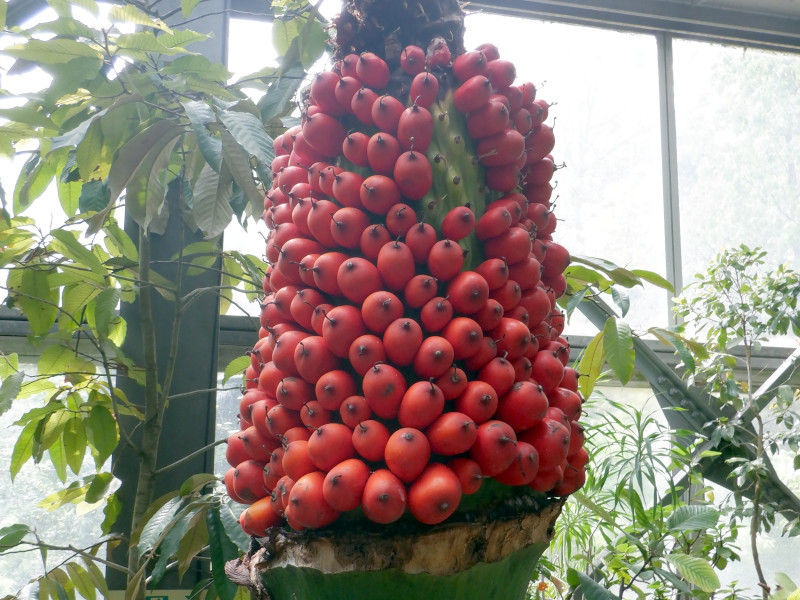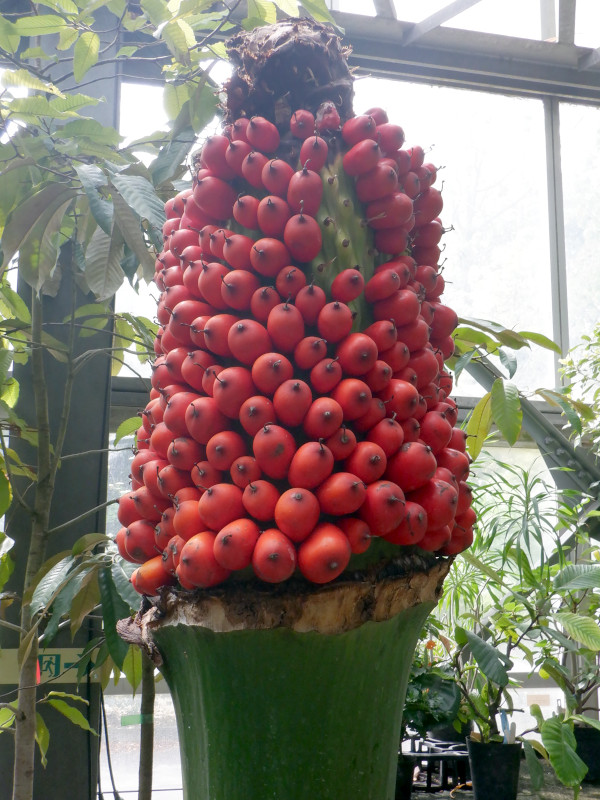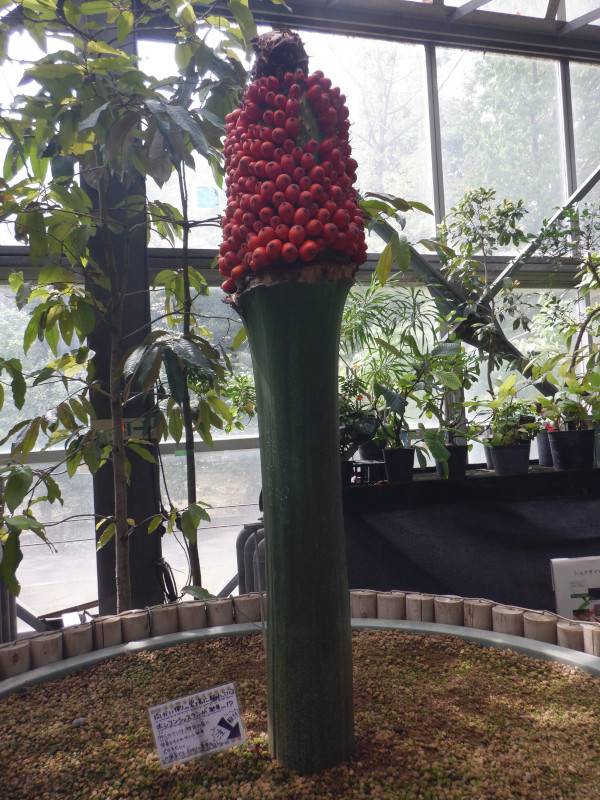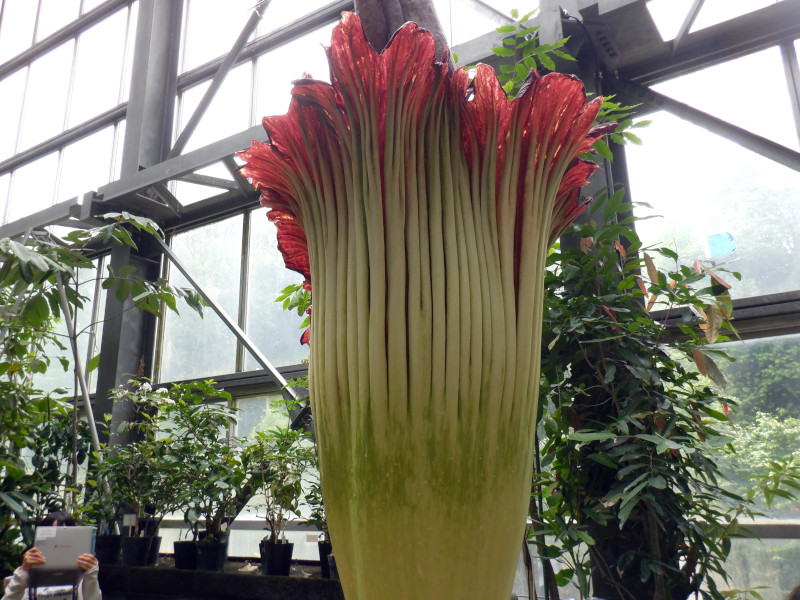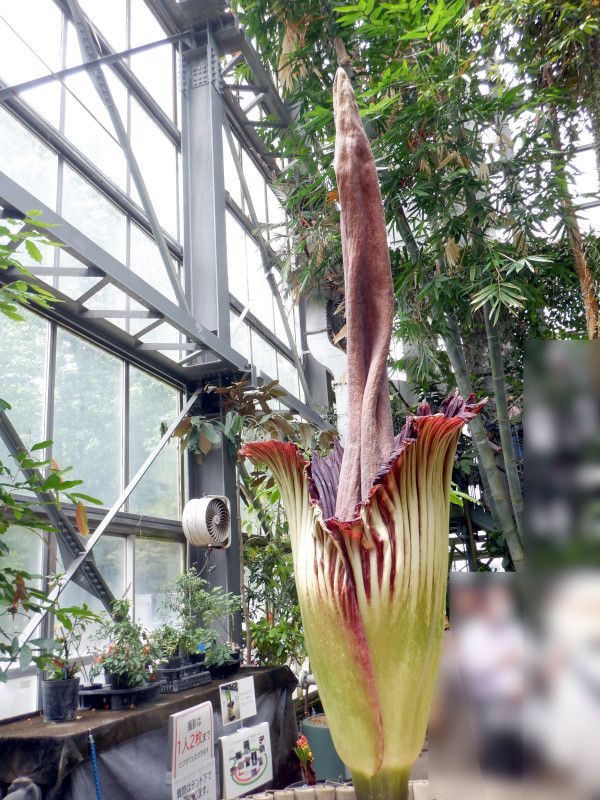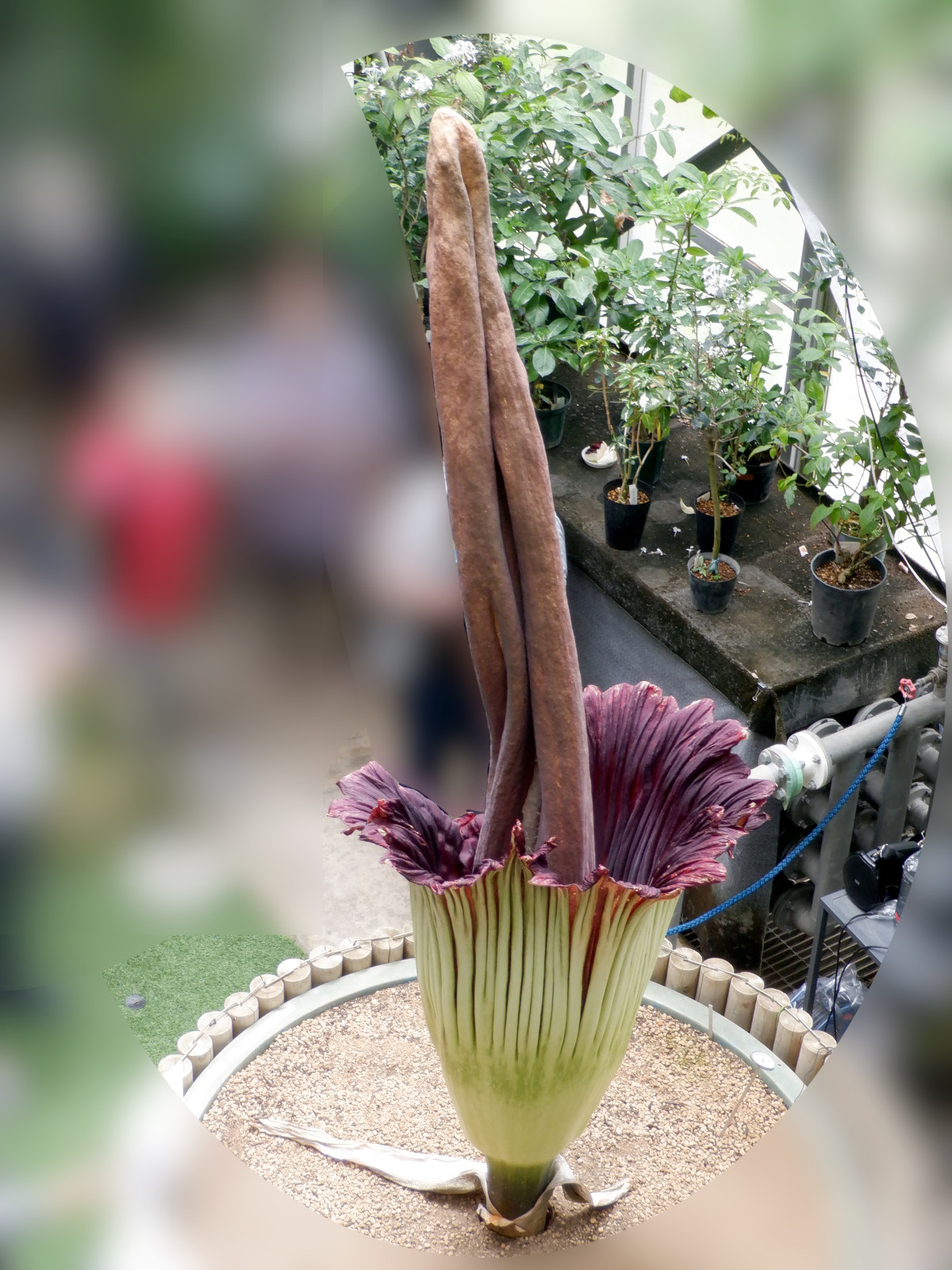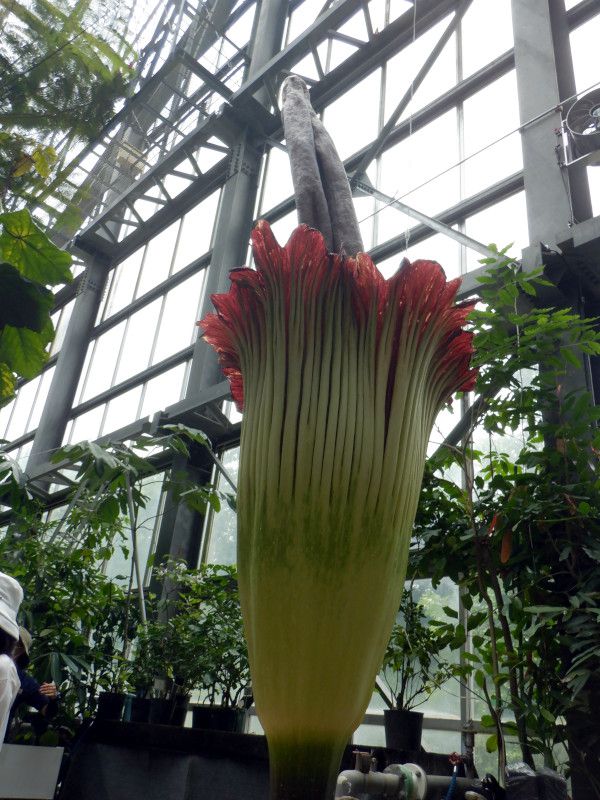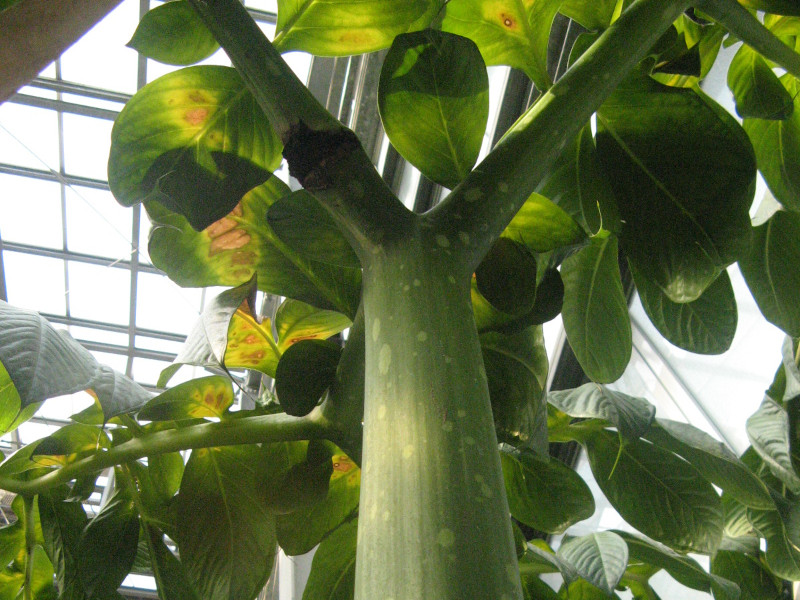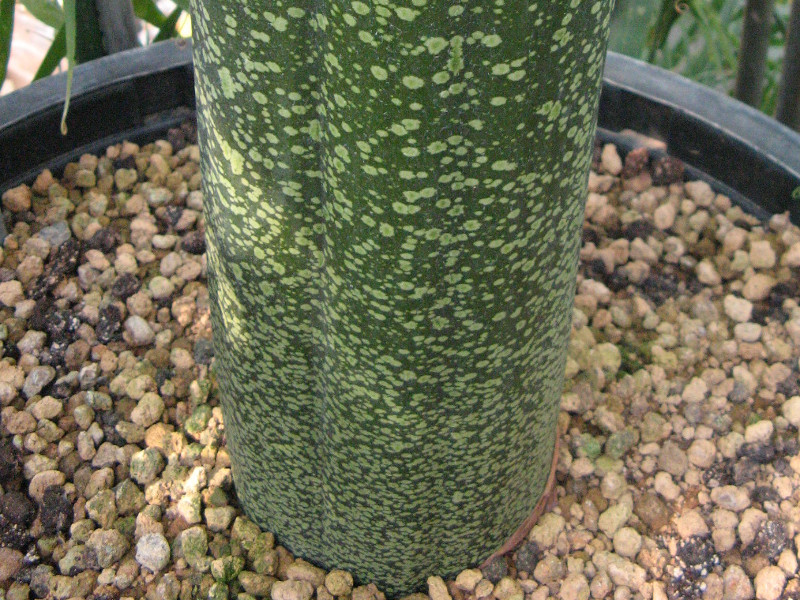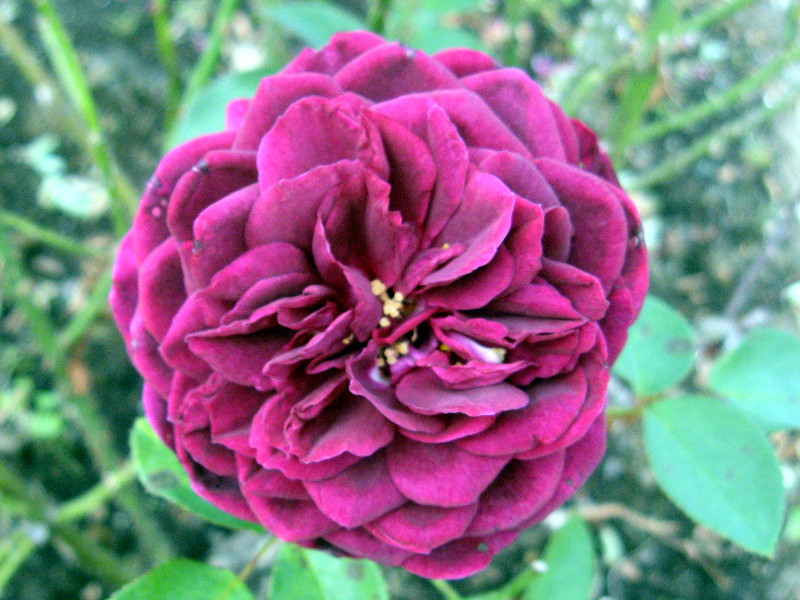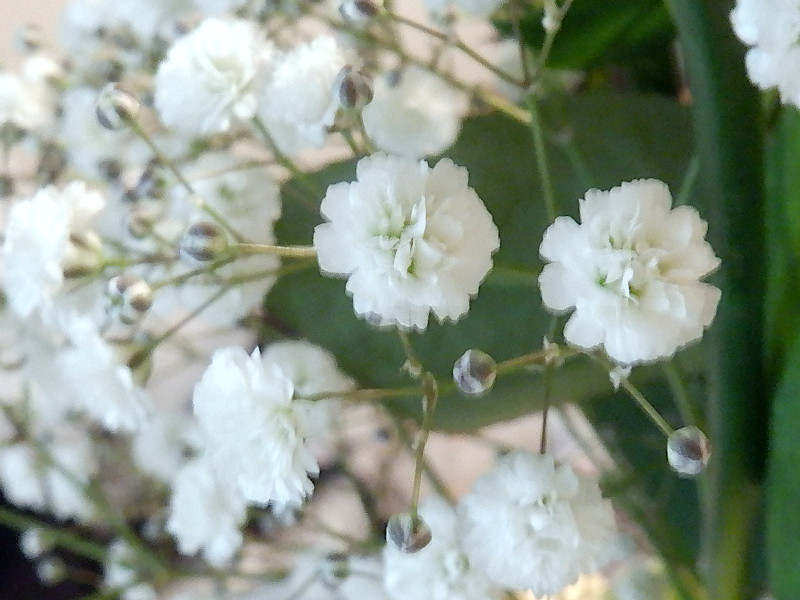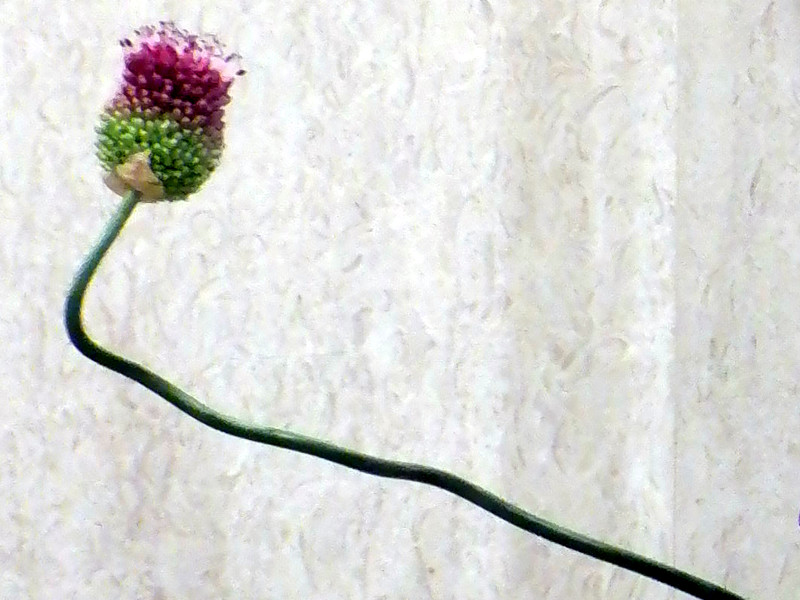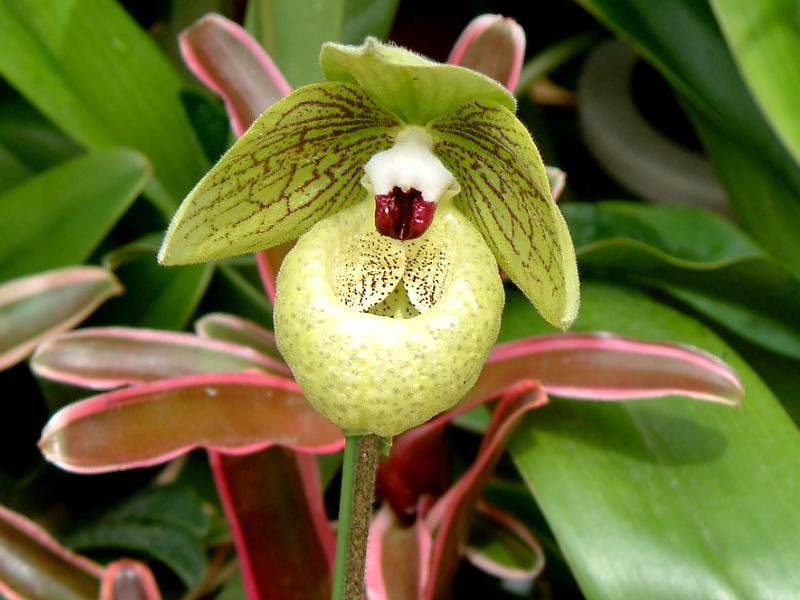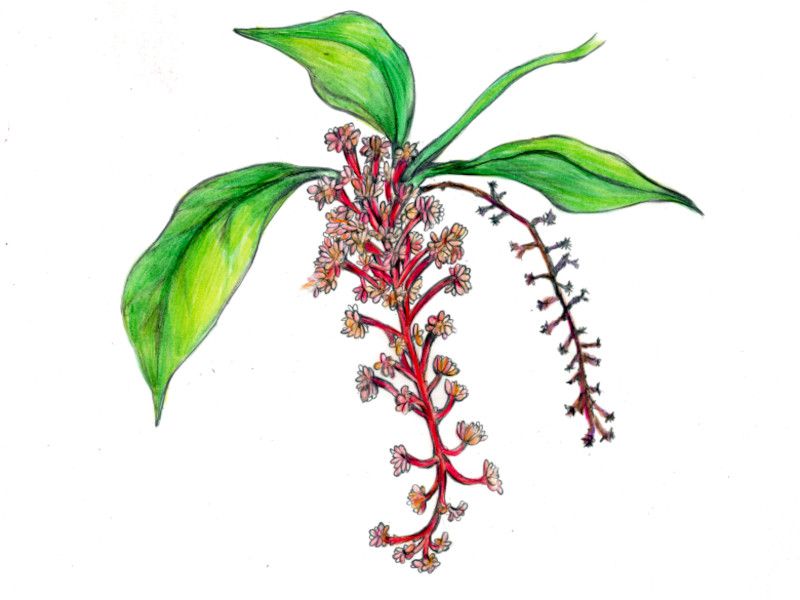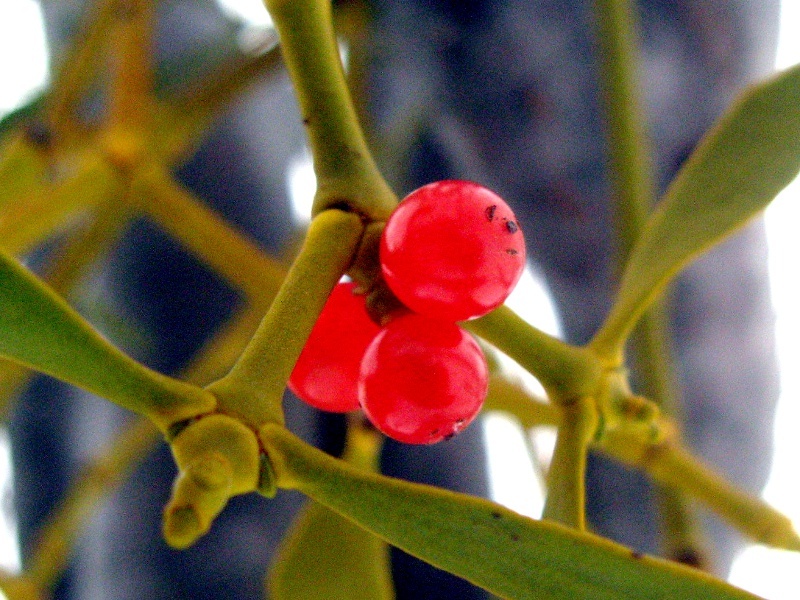Ttitan arum
The size of the flower world's best and rare flowers of Indonesia (the national flower)
- Flower nameTtitan arum
- Scientific nameAmorphophallus titanum
- AliasAmorphophallus titanum, Ttitan arum, スマトラオオコンニャク
- Place of originEndemic to the island of Sumatra (Indonesia)
- Place of floweringGreenhouse, Specific area
- Flowering season
What is Ttitan arum
Amorphophallus titanum or Ttitan arum (scientific name: Amorphophallus titanum) is a perennial tuber plant of the genus Amorphophallus in the family Araceae, endemic to the island of Sumatra (Indonesia). It grows wild in the local tropical rainforests. It is the national flower of Indonesia. It is also known as Titanarum, corpse and flower.
The flower consists of a fleshy inflorescence, a club-shaped appendage at the tip of the inflorescence, and a flame bract with a dark red inner tip. The male flowers are at the top of the inflorescence below the fleshy appendage, which is enclosed in a flame bract, and the female flowers are at the bottom. The flowers are 1 to 1.5 meters in diameter and the inflorescence height is 2 to 3.1 meters.
It produces one leaf per year and stores the nutrients produced by photosynthesis in a globule stem. In the seventh year, instead of producing leaves, it extends the inflorescence, and on the day of flowering, it emits a rotten odor from the tip to attract beetles (sid beetles). Flowering occurs once every few years and the flowering time is 2 days. In order for the beetles to drop from the bracts and pollinate the female flowers, the insects must be carrying pollen from other flowers. After the male flowers have shed their pollen and showered the beetles with it, the appendages and bracts collapse, allowing the insects to escape. Avoiding self-pollination, female flowers pollinated by other pollinators produce red liquid fruits. In its native habitat, seeds may be dispersed by birds such as hornbills (rhinoceros, scientific name: Buceros rhinoceros).
Unfortunately, we missed the timing to take photos during the flowering period, and ended up with only pictures of the flower sequence collapsing or before flowering. However, finally on May 28, 2023 (Sunday), we were able to capture the blooming scene at the Tsukuba Botanical Garden. Then, about a year later, on April 29, 2024 (Monday, a public holiday), we photographed the red fruits growing in the same Tsukuba Botanical Garden.
The world's largest flower (inflorescence)
A. titanum is the largest flower in the world, surpassing Rafflesia arnoldii (scientific name: Rafflesia arnoldii) in terms of diameter. However, Rafflesia is the world's largest single flower.
Origin of the name
The genus name “Amorphophallus” is a compound of the Latin words “amorphos” (misshapen) and “phallus” (lighthouse, genital). The species name “titanum” is derived from the name of the Titan, a giant in Greek mythology. The Japanese name is derived from the fact that it is a member of the konjak family and that its axis grows straight upward and its large inflorescence looks like a candlestick.
Common name: Amorphophallus titanum or Ttitan arum, scientific name: Amorphophallus titanum, national flower (flower of curiosity): Indonesia, also known as Titan arum, corpse flower (corpse flower), Origin: Endemic to Sumatra, Indonesia, Habitat: Tropical rain forest, Flowering season: Infregular, Flower diameter: 1 to 1.5 m, Inflorescence height: 2 to 3.1 m, Inflorescence shape: Carpate, Color: Yellow (male flowers, upper), black (female flowers, lower), Petiole length: 0.5 to 1.5 m, Flowering time: September to November Petiole length: 3 m; petiole color: green with dark brown spots; leaf width: 4 m; medium: insect mediated by beetles; flowering period: once every 2-7 years for 2 days; fruit type: liquid fruit; fruit diameter: 3 cm; fruit color: red; life span: 40 years; reproduction method: seed dispersal by hornbills and other birds; food availability: locals do not eat it; natural enemies: not in the local habitat Natural enemies: nematodes, slugs, etc.; Characteristics: largest flowers in the world; Remarks: rare plant (endangered).
